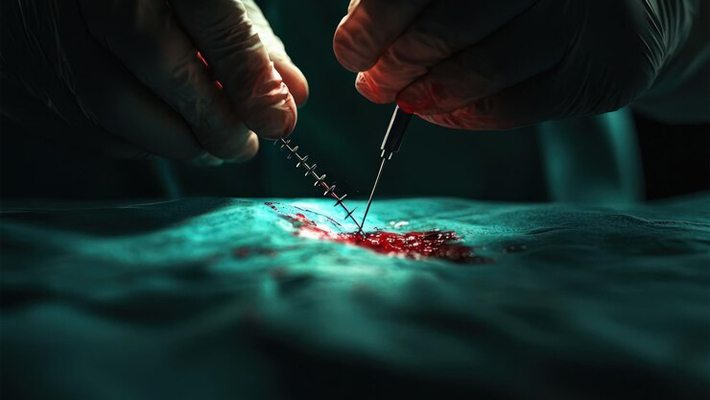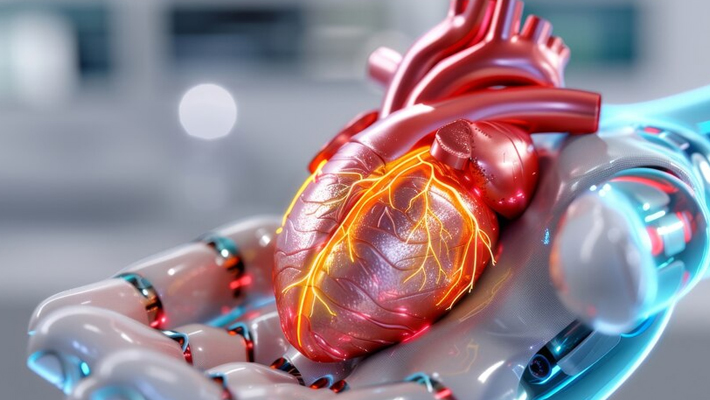
Cardiac blockages, otherwise referred to as Coronary Artery Disease (CAD), takes place when coronary arteries, those supplying oxygenated blood to the heart, narrow or become blocked by the accumulation of plaque (a combination of fat, cholesterol, and other materials). The condition greatly raises the chances of having heart attacks, strokes, and heart failure.
With millions impacted globally, particularly in older adults and those with risk factors such as diabetes, hypertension, smoking, and a sedentary lifestyle, cardiac blockages are a global health concern.
Although lifestyle modification, drugs, and non-surgical treatments can effectively treat the initial phases of the condition, moderate to severe forms are frequently treated with more aggressive, invasive methods to re-establish blood flow and avoid further loss of heart muscle.
Numerous surgical and catheter-based procedures that improve quality of life and save lives have been made possible by medical advancements over time. The top seven invasive procedures used by cardiologists and cardiac surgeons to clear blocked arteries are covered in this article along with information on how to prevent blockage in the heart, their benefits, dangers, and when to utilize them.
Stenting Angioplasty

One of the most popular treatments for cardiac artery stenosis is angioplasty. This laparoscopic technique involves passing a catheter with a tiny balloon through vessels, usually beginning in the groin or wrist, to the obstruction site. A stent - basically, a tiny wire mesh tube - is inserted into the dilated artery to keep it open.
Benefits:
- Less invasive with a quicker recovery period.
- Effective in instances of one or two arterial blockages.
- Decreases pain in the chest (angina) and improves heart functionality.
Risks:
- Possibility of re-narrowing (restenosis).
- Potential for blood clots or bleeding around the catheter insertion point.
Coronary Artery Bypass Grafting (CABG)
For patients with numerous or substantial blockages, Coronary Artery Bypass Grafting (CABG), is a major surgical procedure. To construct a passageway away from the blocked arteries, the procedure involves removing blood vessels from other parts of the body, usually the arm, leg, or chest, and suturing them onto the heart.
- Relief from complex coronary symptoms: People suffering from intricate forms of coronary disease gain significant relief from having to face complex symptoms.
- Increased chances of surviving the condition: Relief from symptoms translates into increased life expectancy, albeit CABG is a multivessel or diabetic disease.
Risks:
- Open heart surgery: Along with recovery from open heart surgery.
- Complications and other consequences: Such as stroke, infection, or kidney injury.
Rotational Atherectomy

With the use of a high-speed spinning burr, rotational atherectomy is used to remove hardened plaque from artery walls when the plaque is highly calcified and difficult to remove with standard angioplasty. Frequently carried out as a preparatory procedure before stent implantation.
- Ineffective for tough, calcified lesions
- Increases angioplasty and stent delivery success rate.
Risks:
- Risk of perforation of an artery.
- Potential release of plaque particles into circulation.
Laser Angioplasty

This method uses a catheter with a laser for heart blockage prevention in the coronary artery. The plaque is blasted into tiny bits by the laser's ultraviolet light, which causes the particles to be removed from and dissolved by the body.
-
- Helpful with small arteries or difficult-to-treat blockages.
- Can be performed with balloon angioplasty and stenting.
Risks:
- Not every type of blockage may be treatable.
- Requires special tools and trained personnel.
Transmyocardial Laser Revascularization (TMLR)
This type of surgery is typically performed on patients who are not candidates for bypass or angioplasty surgery. To improve blood flow, a laser is used to create holes in the heart muscle and inside the heart itself. Usually, CABG is used.
- Useful for heart disease sufferers without options.
- Significantly reduces chest pain (angina).
Risks:
- Invasive surgical procedure risks.
- Limited availability, and selectively implemented
Endarterectomy

This procedure removes the buildup of plaque on an artery's walls. Although it can occasionally be modified for the coronary arteries, it is most frequently performed on the carotid arteries.
- Complete removal of obstruction.
- Restores blood flow in highly constricted vessels.
- More invasive than angioplasty.
- Higher chances for other complications such as bleeding and nerve damage.
Hybrid Coronary Revascularization

This is a hybrid strategy that combines techniques from non-surgical PCI and surgical CABG procedures. In general, the Left Anterior Descending (LAD) is the site of bypass operations. This is a hybrid strategy that combines techniques from non-surgical PCI and surgical CABG procedures. The LAD artery is typically the site of bypass operation, although other arteries that are more challenging to reach are typically stented. The process is less intrusive and provides a nice balance between healing and efficacy. Artery, whereas other, more challenging-to-reach arteries undergo stenting. The process is less intrusive and provides a nice balance between healing and efficacy.
- A tailored approach for complex multi-vessel disease.
- Faster recovery than traditional bypass surgery.
- Requires collaboration between interventional and surgical cardiology teams.
- Not appropriate for everyone.
Conclusion
In conclusion, patients now have access to a wide variety of invasive techniques to restore normal blood flow and prevent serious complications in heart blockage treatment with home remedies for high blood pressure attacks. Numerous factors, including the patient's age, comorbidities, location and quantity of blockages, global cardiac function, and personal preferences, influence the therapy option.
Before deciding on a treatment plan, a cardiologist consultation and the appropriate diagnostic tests, such as stress tests, CT scans, or angiograms, are required. Patients can significantly improve their quality of life and prolong their lives with the right care.







